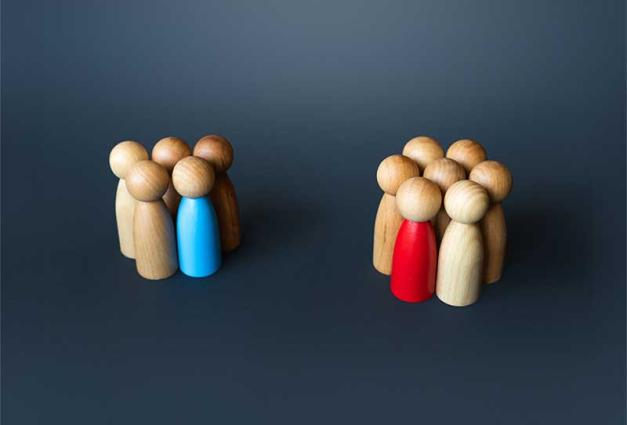Think about the last time you were waiting for important news. You may have found yourself worrying uncontrollably, unable to sleep, and overwhelmed by thoughts of your uncertain future while at work or spending time with loved ones. Our research has followed law graduates expecting bar exam scores, women awaiting breast cancer biopsy results, and even voters leading up to an election. All of these studies painted a similar picture: Waiting for important news is hard. So what can you do the next time you have to wait? How can you survive when you’re plagued with uncertainty and can’t control the future?
Many people attempt to distract themselves in these situations, trying to take their mind off their worrisome thoughts. Unfortunately, distracting yourself can be difficult when dark thoughts fill your mind, and effective distractions are hard to find. Fortunately, researchers have found that one of the best strategies for effective distraction is get into a flow state.
Flow is a state of complete absorption in which you become so captivated by an activity that the rest of the world fades away. Flow activities are challenging but enjoyable, and involve tasks that have immediate, attainable goals. When people are in flow, time often seems to move faster so that hours feel like they pass by in minutes. Flow can occur during a wide variety of activities. For example, people report experiencing flow when they paint, play video games, make music, and exercise.
We discovered that people often try to distract themselves while awaiting uncertain news, but are usually unsuccessful in doing so. We wondered whether the problem might be that people are choosing passive activities—such as watching TV or scrolling through social media—that aren’t engaging enough to override their persistent, unwanted thoughts. Activities that create a flow state may provide a better distraction. Thus, flow seemed like it could be one solution to the problem of anxious waiting—especially given the plethora of research showing that flow benefits well-being.
We started our program of research by studying flow experiences during naturally-occurring and highly stressful waiting periods. During these periods, do people feel better when they engage in flow activities? Our results showed that law graduates waiting for their bar exam results and doctoral students on the job market for faculty positions were less worried and felt better emotionally during periods when they experienced more flow. Although we were encouraged by these findings, we couldn’t conclude just yet that flow was the cause of their relief. It was possible that some unknown variable, such as simply having a good day, led to both greater flow and less worry. Thankfully, well-designed experiments eliminate the effects of such extraneous variables, allowing us to see whether flow experiences directly reduce worry and make it easier for people to wait for important news.
To study the effects of flow experimentally, we needed to find an activity that could easily create a flow state in our research lab. That’s where Tetris™ comes in. Tetris™ is a 1980s puzzle-like video game in which the player must combine and clear rows of falling blocks. The blocks fall at an ever-increasing rate to continually challenge the player’s ability. We had each lost countless hours of our childhoods to this addictive game, and sure enough, it turned out other researchers had used Tetris™ to induce flow in psychological research.
We also needed to create a stressful experience of uncertainty that would be common to all of the participants in our study. So, we took a photo of our study participants and told them that a group of their peers would rate their physical attractiveness. As participants were waiting for their photo to be rated (in reality, no one else actually saw the participants’ photos), we had them play Tetris™ with the game set to operate in one of three ways: a “boring” setting where the blocks dropped very slowly, a “frustrating” setting where the blocks dropped rapidly, and a “flow” setting where the game got harder as the participant got better (which is the typical setting). Based on our initial findings with law graduates and doctoral students, we thought that participants who played Tetris™ on the flow setting would feel better while they waited to learn if their peers found them hot (or not).
As we expected, participants who played Tetris™ on the flow setting, compared to the boring and frustrating settings, felt more positive emotions like happiness, joy, and peace, and fewer negative emotions such as unhappiness, anger, and fear. Although the Tetris™ setting didn’t affect how worried participants were, those who reported more flow reported less worry about having their photo rated regardless of which level they played.
So the next time you’re waiting for important news, find your flow! Maybe this means that you shouldn’t just binge-watch another TV show on Netflix, no matter how tempting it might be. Find something interesting that challenges you and captures your full attention. Find something that you can get lost in, so lost that you feel like you’ve jumped forward in time once you break out of the flow state, transporting you a bit closer to whatever you’re waiting for.
For Further Reading
Rankin, K., Walsh, L., & Sweeny, K. (2019). A better distraction: Exploring the benefits of flow during uncertain waiting periods. Emotion, 19, 818-828. http://dx.doi.org/10.1037/emo0000479.
Csikszentmihalyi, M., & Csikszentmihalyi, I. (1988). Optimal experience: Psychological studies of flow in consciousness. Cambridge, England: Cambridge University Press.
Kyla Rankin is a Ph.D. student in social/personality psychology at the University of California, Riverside. Her research focuses on strategies that promote well-being during stressful life events.
Lisa C. Walsh is a Ph.D. student in social/personality psychology at the University of California, Riverside. Her research focuses broadly on well-being, often employing positive activity interventions such as expressing gratitude and performing kind acts.
Kate Sweeny is a Professor of Psychology at the University of California, Riverside, where she studies how people cope with stressful uncertainty.




